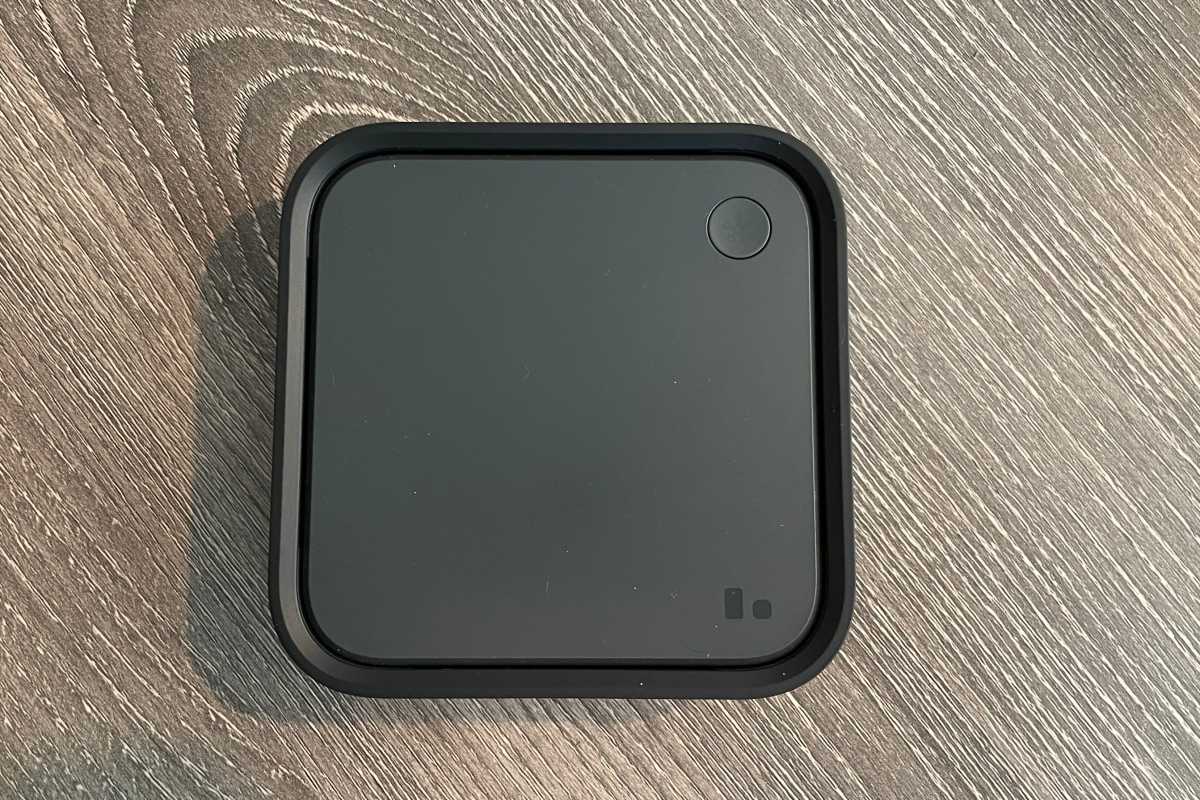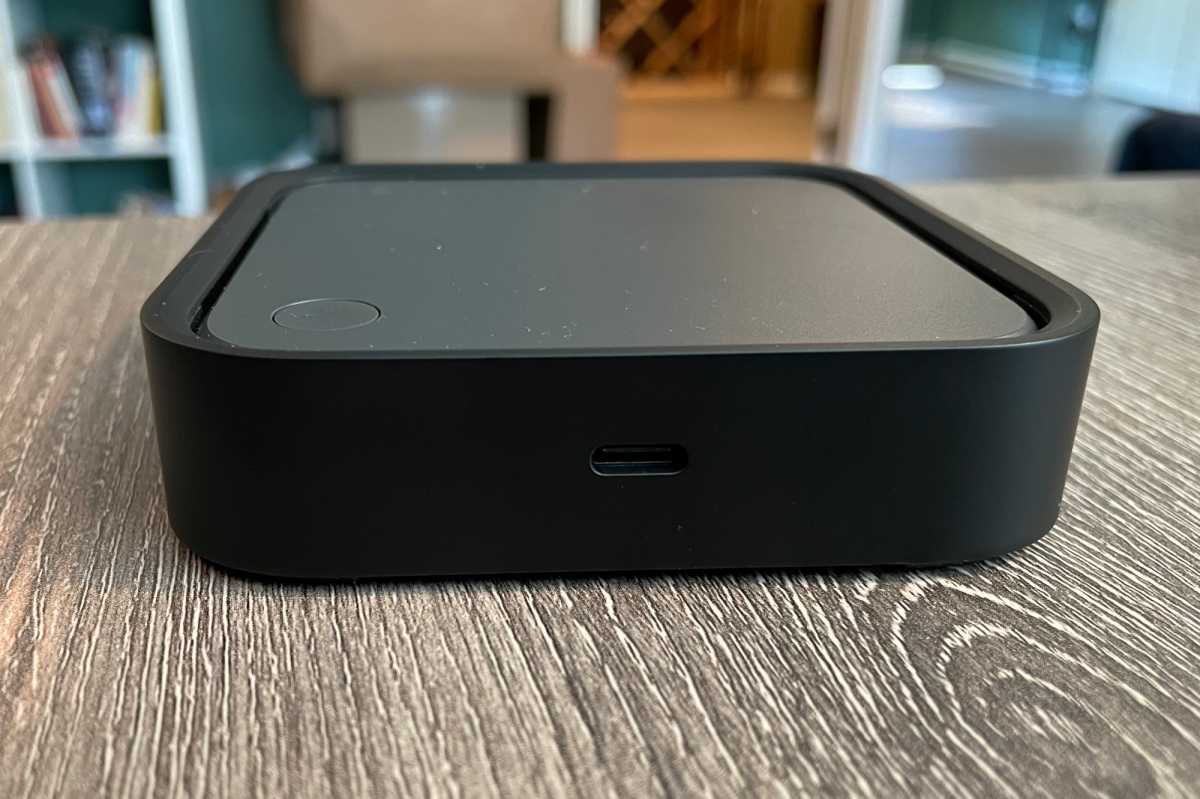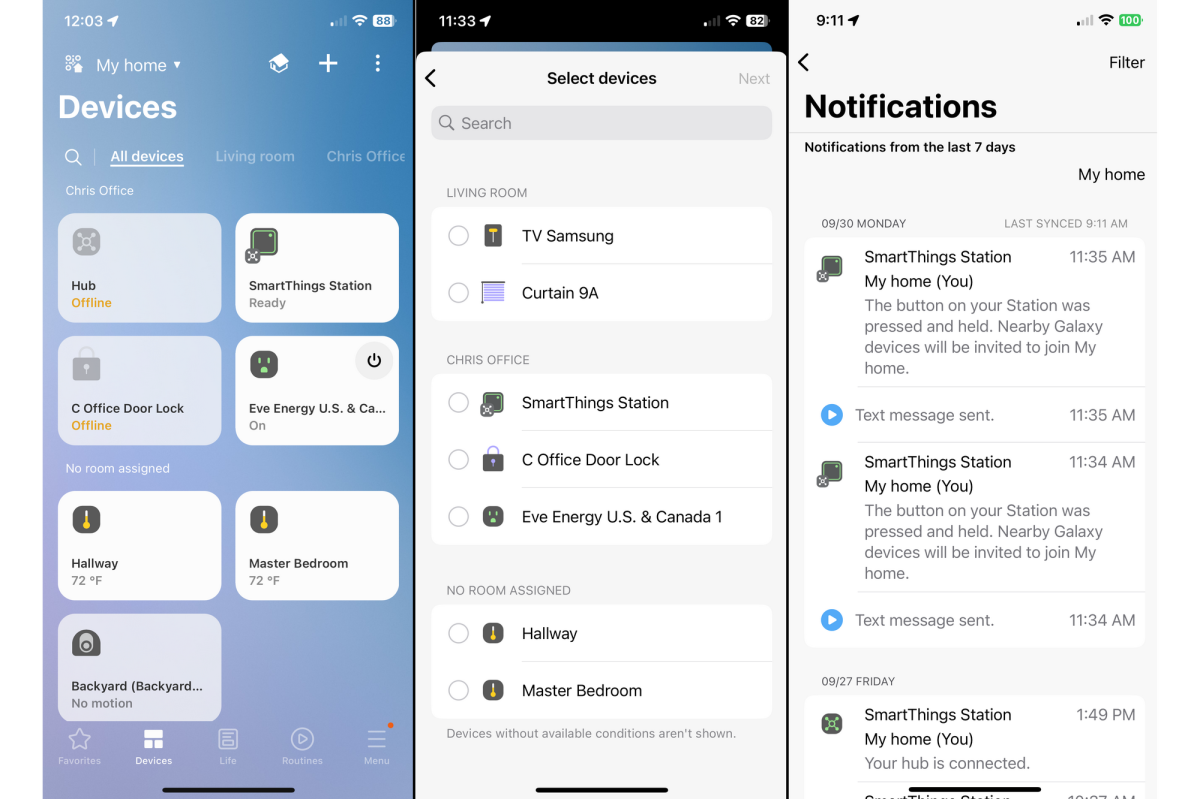Expert's Rating
Pros
- The most stylish SmartThings hub to date
- Stuffed with bonus features like an onboard control button and wireless phone charging
- Matter support adds immense flexibility
Cons
- Many features are Samsung-specific
- Z-Wave, battery backup, and cellular backup no longer included
- Buggy setup further marred by unresponsive tech support
Our Verdict
Samsung’s latest smart home hub piles on features—including unique tools like a wireless phone charger and an onboard action button—making for an affordable and easy-to-use smart home solution.
Price When Reviewed
This value will show the geolocated pricing text for product undefined
Best Pricing Today
It’s easy to forget about Samsung’s SmartThings platform. Heck, even Samsung seemed to be ready to forget about it in 2020, when it announced a “transition” of SmartThings to “a flexible, API-based ecosystem with improved device integration methods,” whatever that means.
But then Samsung decided there was life yet in the hub world, and the SmartThings Station was born.
Almost at the same time, Samsung began integrating SmartThings hub capabilities into its smart TVs, smart monitors, and its high-end refrigerators.
Adding Matter-certified devices to the SmartThings Station was trivially easy.
Specifications
The tea sandwich-sized device is certainly the most elegant offering Samsung has dropped in the space since its 2014 acquisition of the platform. And the Station is the biggest departure from the original SmartThings Hub to date, not just in looks but in capabilities, though some its key features will be appreciated exclusively by users of Samsung Galaxy smartphones.
But let’s start with the hub’s more classic smart home features, those focused on wireless connectivity. The Station is a complete Matter-certified controller and Thread border router, which already gives it a leg up when it comes to cross-device compatibility. Support for Zigbee, Bluetooth, and Wi-Fi devices is also included, of course, but Z-Wave support has been jettisoned. There’s also no longer USB support for locally connected devices. Battery and cellular backup are also no longer in the mix.
This review is part of TechHive’s in-depth coverage of the best smart home systems.
There’s no ethernet port either, so setup is entirely wireless aside from the USB-C power port. (A cable but not a power adapter is included at the $60 price; the $80 SKU adds a 25-watt plug.) Once it’s connected to wall power, you can use the SmartThings app—which hasn’t changed visibly in the last few years—to quickly connect the hub to your 2.4GHz or 5GHz Wi-Fi network. (Though I have more to add on this point later.)

The top surface of the Samsung SmartThings station is an inductive charging pad for your smartphone or other compatible small devices.
Christopher Null/Foundry
If you already have a Samsung SmartThings Hub, you can either manually migrate devices from your old hub to the new or set up a hub group with one hub as a secondary hub. In the latter scenario, you’ll probably still want to move the devices to the Station so it can serve as the primary hub, and you’ll likely need to do it by hand. Samsung’s Hub migration tool wouldn’t work with either the older SmartThings Hub, or when trying to migrate the Station back to the older Hub.
Installation and setup
My only real complaint with the Samsung SmartThings Station is how long it took me to initially get it up and running: three weeks from the time I unboxed it. The device would not connect to my SmartThings app no matter what I tried, and Samsung tech support was incredibly slow to resolve the issue, eventually even asking for log files to attempt to troubleshoot.
The ultimate solution: Log out of SmartThings and log back in, perhaps something I should have tried from the start—or that Samsung should have suggested. Sure, there was a Korean holiday in the middle of that time, but asking a user to wait for the better part of a month to get some basic setup advice instills little confidence.
Day to day use
It was trivially easy to add Matter devices to the SmartThings Station. Just tap the add device button and scan the device’s Matter QR code. The app takes care of the rest, and the device is immediately available for control via SmartThings. For non-Matter devices, SmartThings also features a robust list of partner vendors that covers hundreds of major and minor smart home gear manufacturers. Devices on these platforms are added much like an Alexa skill: Provide SmartThings with your login credentials on the partner platform and it bridges devices set up in the partner’s app so they can be controlled within SmartThings.

The $80 model of the Samsung SmartThings Station includes a USB-C power supply if you don’t want to hunt for one on your own thatm meets the smart home hub’s requirements.
Christopher Null/Foundry
I didn’t encounter any problems setting up or using any smart devices via SmartThings, save for a recently reviewed Eufy smart lock, which I couldn’t get to connect via Matter to anything, so I won’t count that as a strike on Samsung. Control is fluid. Connectivity was steady and solid throughout my testing.
My only real issue with the app that I encountered related to an old, long-retired smart lock that was still connected to the SmartThings platform but which the app was unable to remove. Features such as triggered routines and scheduled automations all worked well, even with multiple devices. This of course has long been the case with SmartThings, and you can still bridge SmartThings to Alexa, Google Assistant, and IFTTT for even more flexibility.
Of course, any modern smart hub can do just about all this stuff. So, Samsung tosses in some new tricks that sweeten the deal and make its platform more enticing. Most of these are built around smartphones—especially Galaxy phones, naturally.
Other features
The most universal and perhaps the most compelling of these is that the Station itself works as a wireless phone charger. No setup needed here: Just drop any compatible phone on top of the plugged-in hub and charging is automatic. A status light on one corner of the Station even tells you whether it’s charging or if your phone’s battery is full. The status light also helps to ensure you have your phone aligned properly on top of the Station so that the charger engages, a process which can be a little touchy. Note that power delivery varies by device: If you have a Samsung phone, you’ll get a hefty 15 watts of charging power; other brands will charge half that power or less.
One nifty feature is that the charger can be used as a routine trigger. I was able to simply set up two routines to flip a light switch when I dropped my phone on the charger and another when I took it off. You could also set up a routine to alert you when your phone’s battery is full, for example. It’s a handy bonus feature that offers lots of tantalizing possibilities.

Samsung’s SmartThings app makes it very easy for the DIYer to set up their Matter-based smart home.
Christopher Null/Foundry
The Station also enhances the use of SmartThings Find, which can keep tabs on connected Samsung phones or geolocation tags in real-time. This feature isn’t specific to the Station, which, like Apple’s version, is designed to help you find things whether they’re near or far away, but the Station can work as a sort of home base scanner to let you know if your phone has left the building or if it’s returned. I don’t have a Galaxy phone, so I didn’t test this feature directly.
Lastly, the Station itself has a single control button on top of the device. You can assign three triggers to the button—short press, long press, or double press—and assign these to any function that SmartThings can undertake. Whether that’s controlling specific devices, selecting a scene, or sending a notification, the button is easy to configure and intuitive to use. One issue: The location on top of the hub is slightly problematic if you’re using the Station as a phone charger, since your phone will necessarily cover the button.
Should you buy a SmartThings Station?
That aside, it’s hard to find much in the way of fault with the product. At just $60 (if you can find it for sale solo, you can surely source a good USB-C power adapter of your own for less than $20), it’s a solid bargain, too. It’s still a good value if you must buy it with Samsung’s power supply.


